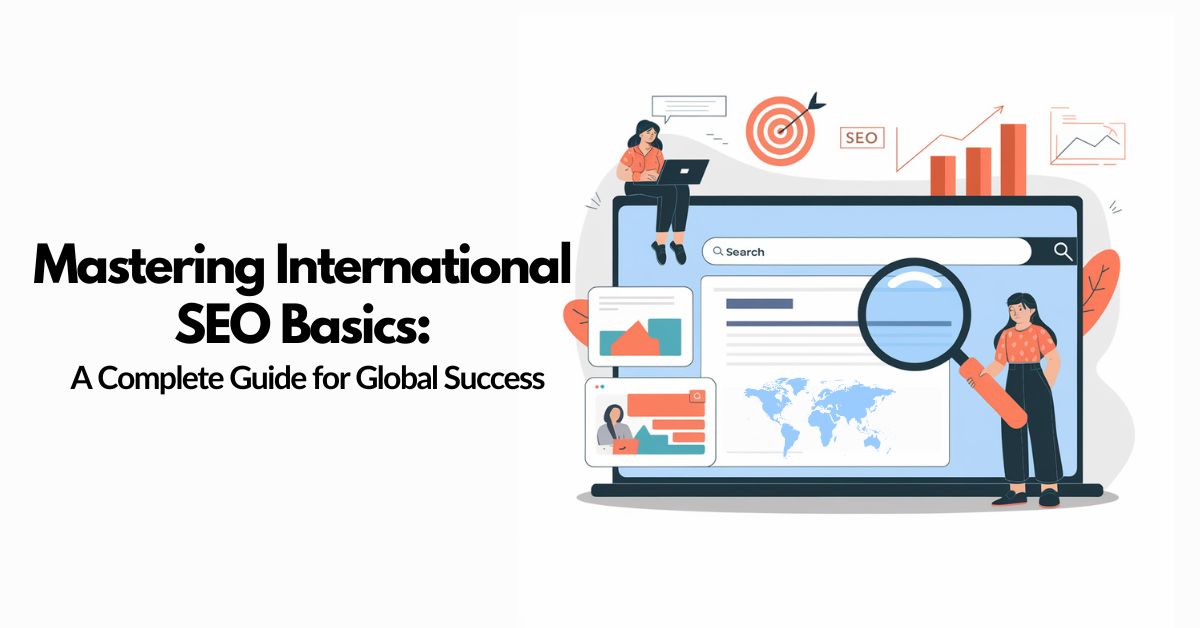# Understanding International SEO Basics: A Comprehensive Guide
In today’s interconnected world, businesses are not limited to their local environments anymore. With many brands aiming to capture the attention of a global audience, mastering international SEO becomes crucial. This guide will delve into the **International SEO Basics**, highlighting the strategies that businesses should adopt to thrive on the global stage. Understanding these basics is not just beneficial but essential for businesses wishing to expand their digital footprint beyond national borders.
International SEO ensures your website is optimized for different countries and languages, allowing you to reach a wider audience. Statistics show that over half of the internet’s content is not in English, which signifies a vast opportunity for businesses to tap into diverse markets. If you’ve ever wondered how to make your digital presence felt on a global scale, or faced challenges in connecting with international customers, this guide has the answers.
## What is International SEO?
International SEO is the practice of optimizing your website so that search engines can easily identify which countries you want to target and what languages you use for business. Unlike regular SEO, which focuses on making a website visible within a specific country or language, international SEO makes your online content accessible and relevant to people across various regions of the world. The essence of international SEO lies in its ability to create a coherent strategy that considers language, culture, and market particularities.
**International SEO** can significantly enhance your brand’s visibility and accessibility, providing a bridge to connect with audiences globally. With international SEO, businesses can cater to local tastes and preferences while maintaining their brand’s core values.
## Key Elements of International SEO
### Understanding Global Audiences
When aiming for international SEO, understanding your global audience is paramount. Tailoring your content for different cultures requires in-depth research about preferences and behavior in each target market.
– **Identify cultural preferences**: Different cultures have unique values and trends. Understanding these will allow you to tailor your offerings.
– **Use analytics tools**: Utilize tools like Google Analytics to determine where your traffic is coming from and what content is most popular in different regions.
### Geo-Targeting
Geo-targeting is vital in defining how your content will be perceived in different regions. It involves tailoring your website to appeal to visitors in a specific location by utilizing;
– **Language and regional content**: Adapt your content to suit local dialects and interests.
– **Country-specific domains (ccTLDs)**: Use domain extensions that correspond to specific countries to improve trust and relevance with local audiences.
### Hreflang Tags
Hreflang tags play a crucial role in international SEO. They help search engines understand which language you are using on a specific page. By setting these tags correctly, you avoid the risk of duplicate content and ensure users see the correct language or regional page.
For example, to target English speakers in the US and Spanish speakers in Mexico, you could use:
“`
“`
### Cultural and Language Considerations
The language you use is more than just a tool for communication; it’s a reflection of culture. Effective international SEO requires content that goes beyond translations. Instead, focus on content localization to enhance user engagement.
– **Native translations**: Ensure that translations resonate with the local audience.
– **Culturally relevant marketing**: Tailor messages to align with local customs and traditions.
## Technical Aspects of International SEO
### Website Structure
Choosing the right website structure is pivotal in international SEO. This involves deciding between subdomains, subdirectories, or ccTLDs:
– **Subdomains** (e.g., de.example.com) allow you to create completely separate sites for different regions.
– **Subdirectories** (e.g., example.com/de/) provide a more centralized management system, sharing link authority across regions.
– **ccTLDs** (e.g., example.de) are highly region-specific, creating a strong local presence but requiring more resources to maintain separately.
### URL Parameters and Language Indicators
Managing multi-language URLs with parameters is crucial in ensuring clear navigation for both search engines and users. Parameters such as `/lang` in URLs can indicate language-specific pages.
### Page Speed and Mobile Optimization
Page speed is not universal across the globe, with various regions experiencing different internet speeds. Therefore, optimizing your site’s performance to load swiftly is critical.
– **Compress images** and utilize efficient coding practices for faster loading times.
– Ensure your website is **mobile-friendly**, as this is crucial in markets where mobile internet usage surpasses desktop.
## Content Strategy for International Markets
Creating content that resonates on a personal level with your audience is essential. Best practices include:
– **Leverage local stories and events**: Incorporate local culture and current events into your content strategy to foster a deeper connection.
– **Engage with local trends**: Keep abreast of the latest trends within each region to capture the dynamic interests of your audience.
## Tools and Resources for International SEO
The right tools can refine your international SEO strategy, providing insights into varying markets, and streamlining the optimization process.
– **Google Search Console**: Essential for monitoring how your site is performing in different regions.
– **SEMrush and Ahrefs**: For comprehensive keyword research tailored to specific countries and languages.
– **DeepL and A/B Tasty**: Tools for accurate translations and testing localized content.
## Common Mistakes in International SEO
Avoiding common pitfalls in international SEO can be an uphill task. Here are a few mistakes to steer clear of:
– **Direct translations without localization**: This often leads to irrelevant content that fails to connect with the audience.
– **Ignoring local search engines**: Not all regions primarily use Google, so optimizing for other search engines like Baidu or Yandex is crucial.
– **Lack of cultural sensitivity**: Content that doesn’t respect local norms can alienate your audience.
## Conclusion
As you venture into the international market, it’s vital to remember that international SEO is not merely a technical process but also a strategic approach to reach and engage audiences across different cultures. From choosing the right website structure to employing an effective content strategy, mastering these **International SEO Basics** can propel your business into global success.
## Call to Action
Would you like to dive deeper into international SEO strategies or seek personalized guidance? Subscribe to our newsletter for more in-depth insights or reach out to our expert team for tailored consultation services that align with your global expansion goals.
—
By following a structured approach to international SEO, leveraging best practices, and steering clear of common mistakes, businesses can successfully navigate the complexities of reaching a global audience. Consistent optimization, paired with cultural awareness, will undoubtedly lead to greater international presence and business growth.







